Last 1920s hotel on downtown Miami’s Biscayne Boulevard getting replaced by 104-story tower
For decades, the glass-and-aluminum facade of the YVE Hotel on Biscayne Boulevard in downtown Miami has concealed a historic secret.
Beneath the mint-green panels that cover the exterior of the 16-story tower lies a significant relic of Miami’s 1920s real-estate boom. Once known far and wide as the Miami Colonial Hotel, it is, all outward appearances aside, the very last of a row of grand hotels of the era still standing on Biscayne Boulevard.
It won’t be for much longer.
PHOTOS: Miami hotels used to look like that? See the old photos of these downtown landmarks
Big-time New York developer RFR Realty, which earlier this year bought much of the city block where the hotel sits, plans to demolish the 1926 tower, along with an abutting office building from 1923, to erect a 104-story “supertall” hotel and residential tower in its place. Demolition and zoning permit applications from RFR are under review.
That would leave the cherished, historically protected Freedom Tower, built in 1925 as the home of the Miami News and now undergoing a top-to-bottom renovation, as the only surviving exemplar of the romantic 1920s skyline of Mediterranean spires and towers that for decades defined downtown Miami in photos, postcards and the popular imagination.
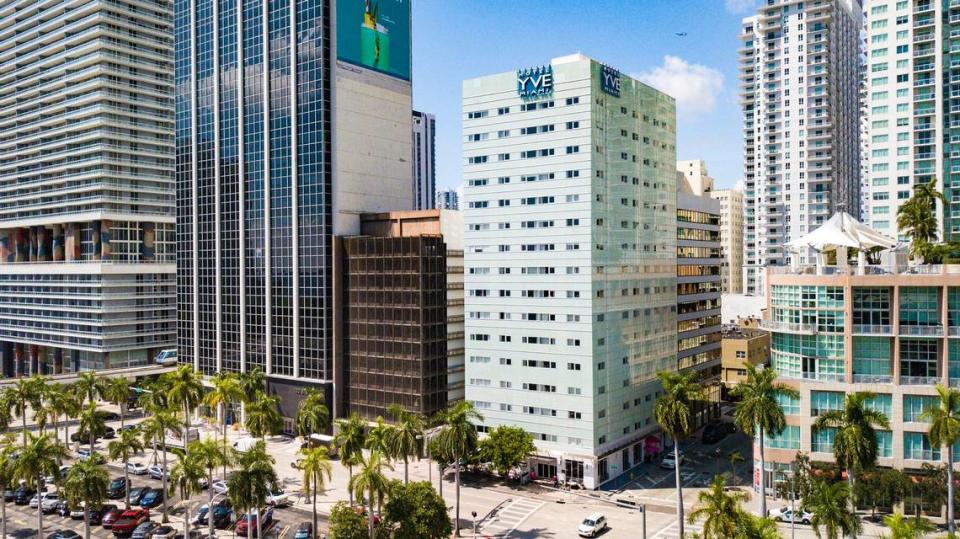
Given the nearly 100-year-old hotel tower’s altered state, the result of a 1960s “modernization,” no one has come forward to push for saving it. But historians and preservationists think the Miami Colonial’s original stone and stucco facade survives behind the steel and glass mask, and they say something will be irretrievably lost when it bites the dust along with the adjacent office tower, once also a hotel.
“Looking from the bay to the west, for years you would see this row of what I call the original skyline of Miami on Biscayne Boulevard,” said Miami history blogger Casey Piket, who has published a detailed history of the Miami Colonial. “These two buildings on this block, along with the Miami News tower, are the last relics of that era.”
The Miami Colonial was one of four big contiguous hotels that formed a virtual, graceful wall along what was originally North Bayshore Drive, a narrow road that skirted the water before landfill created Bayfront Park and a much wider, Royal Palm-lined Biscayne Boulevard in the mid-1920s. The first of the hotels to go up was the 10-story McAllister, which opened in 1919 at the cusp of the boom as the tallest building in the city.
‘It was a marvel, that skyline’
The Miami Colonial, originally and briefly known as the Watson, followed in quick succession along with the Columbus and the Everglades, which at 23 stories long stood as the city’s largest hotel. The hotel foursome was a principal component in a soaring Miami skyline the likes of which few other cities in Florida, or the rest of the South for that matter, could boast of, Miami historian Paul George said.
“It was a marvel, that skyline. Miami could brag about having something no one else had. It was an aberration for a city this size to have a skyline like that,” George said.
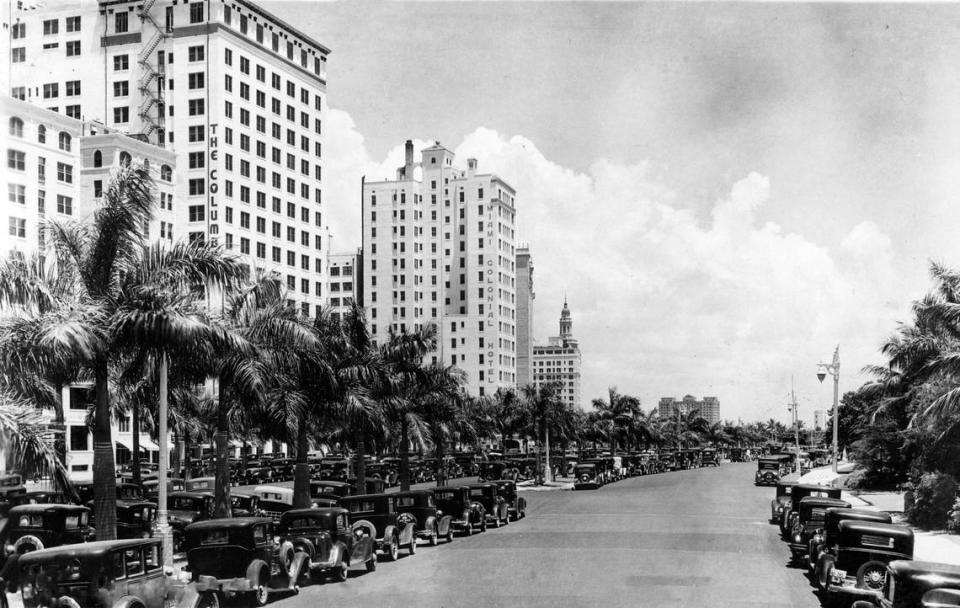
The four hotels remained a mainstay of downtown Miami even as the area went into a steep decline, drawing tourists, business travelers and social and civic events well into the 1980s. The Top o’ the Columbus restaurant was a perennial draw for its panoramic views of the bay and the city.
But a city known for casting aside its history and architecture in succeeding waves of development did nothing to preserve or protect the landmark hotels, preservationists say — unlike Miami Beach, which in the 1980s began enacting protections for its trove of Art Deco and mid-Century hotels.
Allowed to become rundown, the Columbus and McAllister were both demolished in 1988. The Everglades came down in 2005, replaced by the Everglades on the Bay condo and retail complex, today renamed Vizcayne. The McAllister and Columbus eventually were replaced in 2007 by the 50 Biscayne condo tower.
The Miami Colonial survived because it was renovated and re-skinned in the early 1960s to give it a modern look, the American Institute of Architects’ “Miami Architecture” guide says, but adds: “It still remains, in its size and proportions, a quintessentially 1920s structure.”
Right behind it stands another 1920s building that, while perhaps not as significant, represented another milestone in the city’s development as one of its earliest high-rise office buildings. The 1923 Exchange building, also reclad at some point with a modern exterior and mirrored windows, was turned into a hotel before a conversion back to office use. It long housed the Miami chamber of commerce.

Reflects city’s boom-and-bust record
According to history blogger Piket, the Miami Colonial’s colorful, roller-coaster history paralleled the city’s boom-and-bust history from before it even opened.
It was built by Callie H. Watson and her son, who had been running a hotel in upstate New York before taking over management of a downtown Miami hotel, The Strand, in 1922. Their new Watson Hotel, financed through loans, had a then-lavish estimated construction cost of $1 million.
“The lobby had a beamed ceiling and was decorated in tile. The designs of the ceiling and other parts of the public spaces were taken from those found in an armorial room in a famous villa in Barcelona, Spain,” Piket wrote in his blog. “Floors on the lower level were finished with tile, while upper story floors consisted of terrazzo. The building was framed with steel and consisted of an artificial stone exterior to provide a Spanish appearance.”
In a curious aside, Piket said in an interview that one owner doing a renovation of the hotel considered restoring the original tile flooring, only to change course after discovering on pulling up a floor covering that the design featured swastikas. The hotel was designed well before Adolf Hitler adopted the ancient Eurasian symbol of luck for his Nazi movement.
Unfortunately for the Watsons, the construction of Bayfront Park and Biscayne Boulevard created “chaos” just as their hotel opened, already delayed by a shortage of materials and workers produced by the unprecedented development boom, Piket wrote.
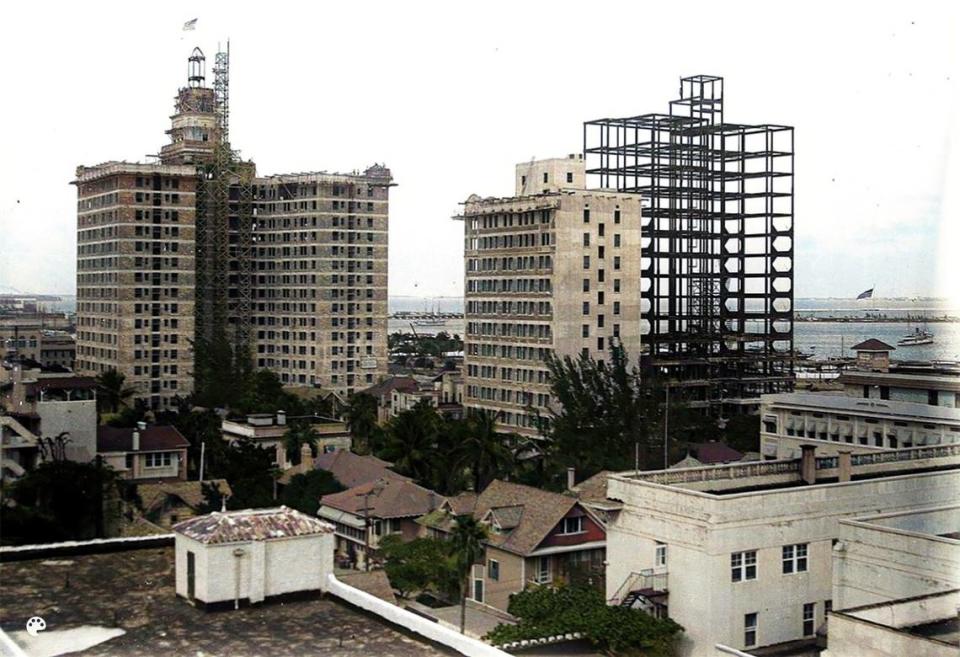
Then came the hurricane of 1926, which washed boats up on the new boulevard, flooded the lobby of the newly opened Everglades Hotel a block north and burst the real-estate bubble three years before the Great Depression sank the nation’s economy. By 1927, the Watsons lost the hotel to bankruptcy. New owners, just one group in a succession of frequent ownership changes over decades, renamed it the Miami Colonial in 1930, Piket wrote.
In the mid 2000s, Piket said, the hotel, renamed the Continental, was briefly owned by Ian Schrager, co-founder of Studio 54, the famous now-closed nightclub in New York, as part of his boutique hotel enterprise. While the concept would eventually prove massively successful for Schrager, Piket wrote that he lost the Continental to foreclosure in the 2008 real-estate crash.
Making room for a supertall tower
The newest owner, RFR, co-founded by limelight-hugging developer, real estate investor and art collector Aby Rosen, also owns two Manhattan icons, the Chrysler and Seagram buildings. A spokeswoman for RFR declined to comment on the developer’s plans or timeline for demolition.
An RFR affiliate bought the YVE Hotel last year for $25.75 million, according to the Miami-Dade County property appraiser’s website. RFR paid $25 million for the former Exchange building, and $81 million for the adjacent New World Tower, which dates to 1963, the website indicates.
According to a zoning application filed by RFR with Miami-Dade County, the New World Tower is not part of the redevelopment plan and will remain, but its parking garage, which faces Biscayne Boulevad, would also be torn down.
The massive RFR plan is the latest to propose a supertall tower for downtown Miami and Brickell. Supertalls are generally defined as buildings exceeding 300 meters in height, but in Miami they are effectively capped at 1,049 feet by the Federal Aviation Administration because the downtown area sits under takeoff and approach lanes for Miami International Airport.
Only one of several announced supertall projects is under construction — the Waldorf Astoria Hotel & Residences just a couple of blocks north of the YVE. Building demolitions have taken place to clear the way for two others. Florida East Coast Realty has said it’s moving forward with a long-planned supertall to replace the firm’s longtime headquarters, a 1963 office high-rise at South Biscayne Boulevard and Southeast First Street.
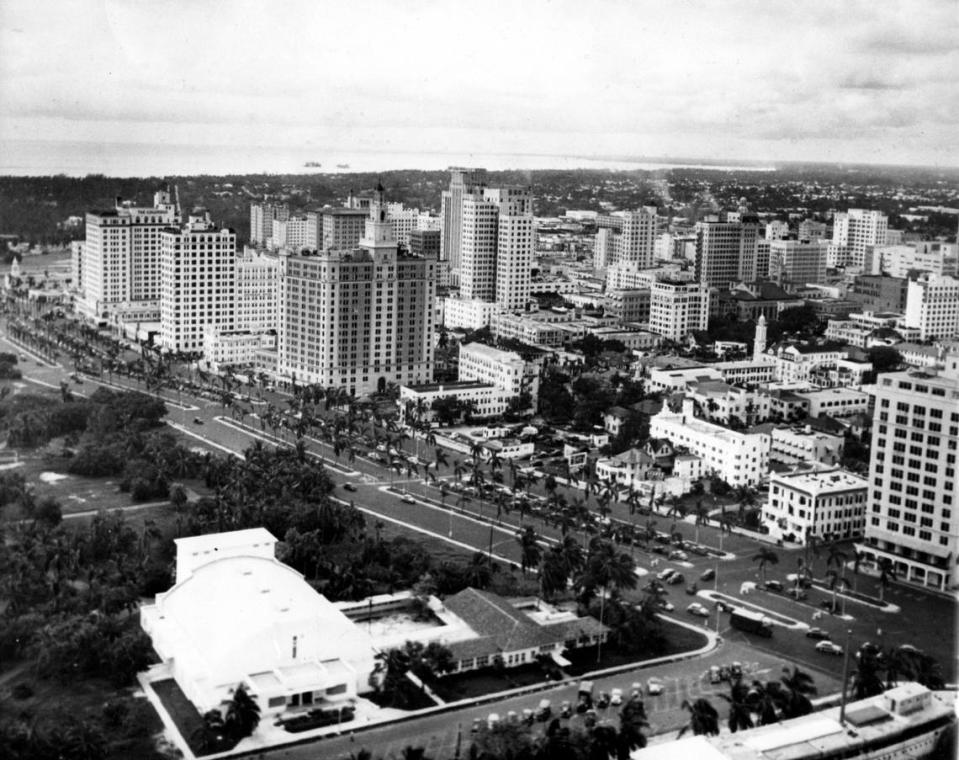
Swire Properties and Related Companies of New York, meanwhile, say they’re also going ahead with One Brickell City Centre, which would be Miami’s and Florida’s tallest — and largest — office building.
RFRs zoning application calls for over 1,000 residential units and a hotel atop a giant parking garage podium. Miami’s Zyscovich architecture firm, headquartered in the New World Tower, is designing the supertall.
Latest turn in downtown Miami
Piket, who once called on the former Miami Colonial’s hotels owners to restore it to its original look, resignedly noted that its presumed doom underscores that some things in Miami don’t change: Construction in the 1920s, he and historian George said in interviews, also constituted a radical change for the day.
Miami Colonial and its vaunted companions erased a residential neighborhood of upscale homes dating to the young city’s earliest days, they said.
“That would all succumb then to those boom-era hotels,” George said.
Said Piket: “Some of those buildings were put up quickly and really changed the skyline of Miami for that time.”
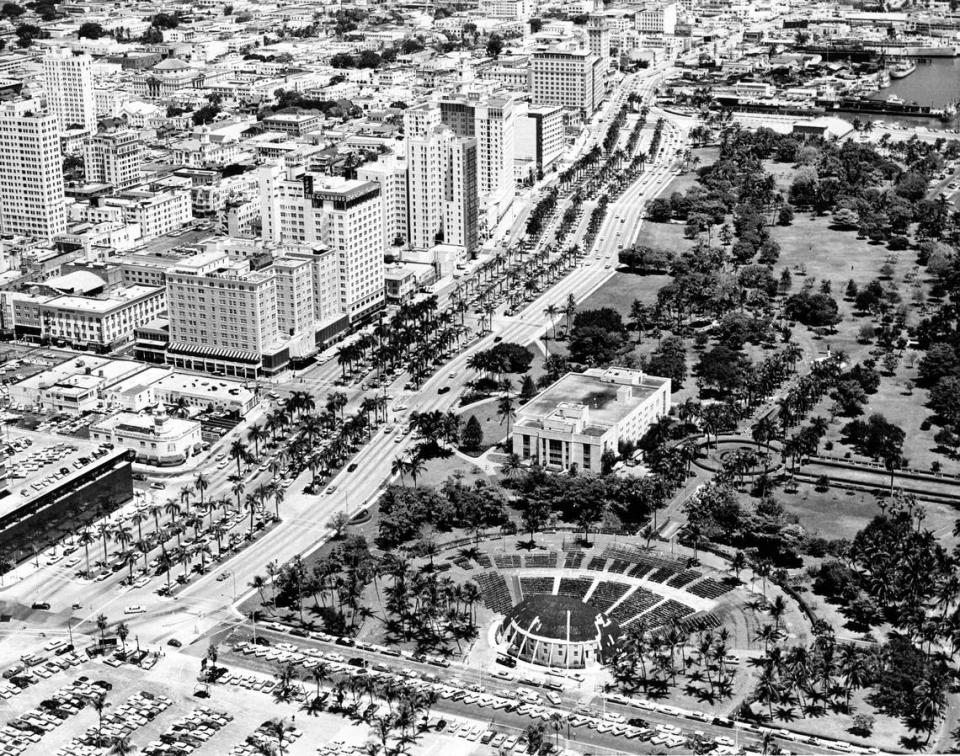
That the Miami Colonial would be replaced by a building inconceivable 100 years ago simply reflects the latest turn in the city’s real estate-driven fortunes, George said.
“I think the Boulevard has become an area where, if you are going to redevelop, it’s so expensive that it has to be a 1,000-foot building,” George said. “If you’re going to pay all that money, you might as well max it out.”

